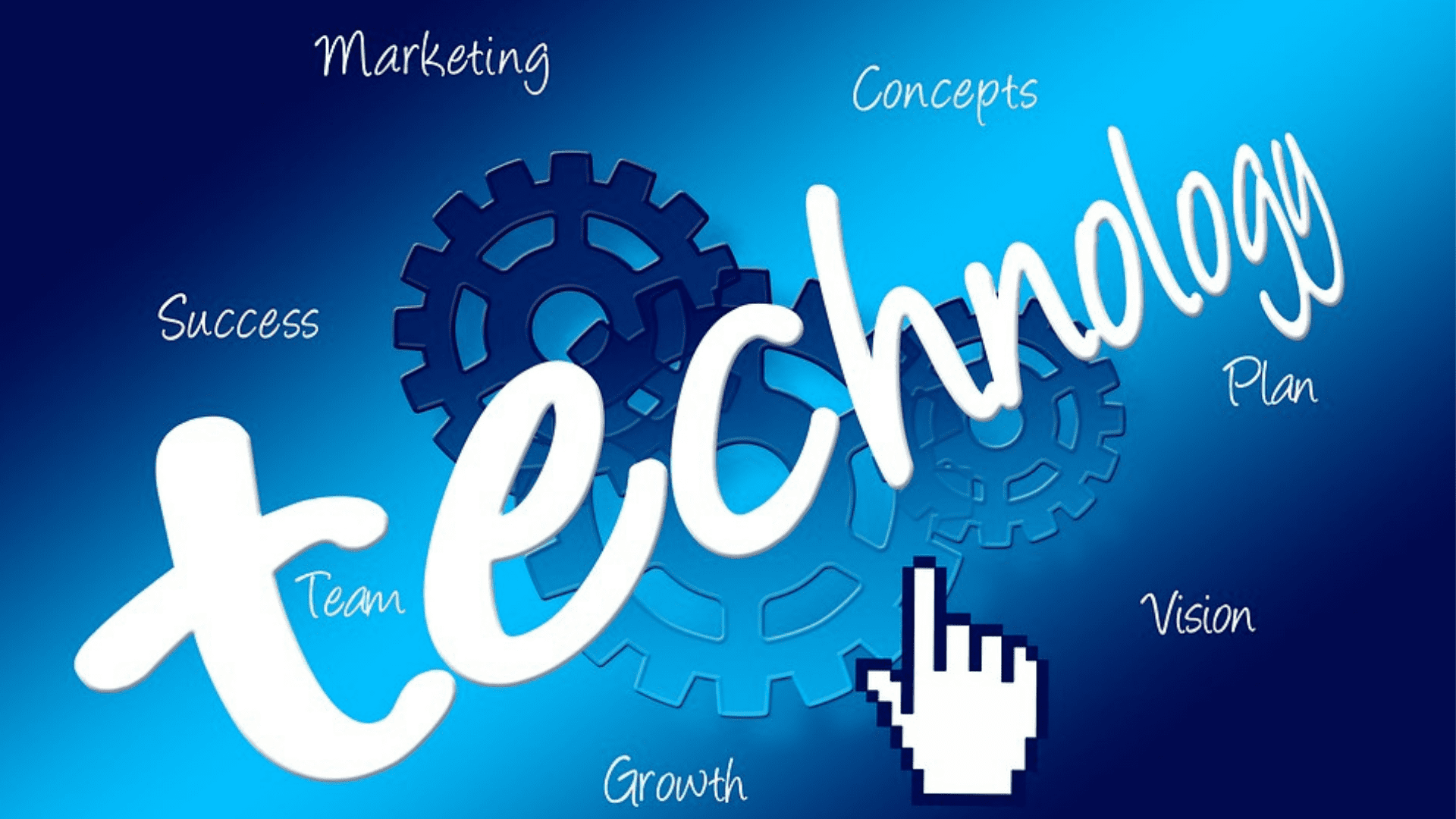Marketeering Blog
Using Technology for Marketing Your Business

Are You Taking Advantage of Marketing Technology?
Remember when running ads in the newspaper and mailing flyers to homes were the norm for businesses to market their products and services? While these are still used, they have taken a back seat to websites, social media, and online advertising. Technology has taken over marketing. We’re going to explore using technology for marketing your business.
Marketing Technologies
Technology has given businesses more marketing opportunities than ever before, says Lumen Learning. It not only allows businesses to engage and interact with customers, but also to use data to monitor and tweak marketing campaigns.
AI (Artificial Intelligence) is no longer just about robots and self-driving cars, according to Forbes. It now has become a major part of digital marketing – not just for conglomerates, but also for small businesses. This technology is used to automate content distribution, measure engagement, help target potential customers, and even handle customer inquiries through chatbot.
Related: Inbound Marketing Strategies
There are various software and platforms available to businesses:
- Automation Systems – Services like MailChimp and HootSuite let businesses create, schedule, and post social media and email messages all in one place. These provide access to all social media platforms and allow businesses to monitor open rates to determine a campaign’s success.
- CRM (Customer Relationship Management) – More and more businesses are turning to CRM software, like SalesForce, to track and measure campaigns across multiple channels. Such data as customer responses, click-through-rates, leads, and web traffic/activity are compiled to help your business perfect customer relationships.
- Cookies – These are used to track visitors to your website so a prospect can be retargeted. As Hubspot explains, third-party cookies, as they are known, are a piece of code that gathers a visitor’s information, like what they were viewing on your website. Let’s say they were looking at a pair of sneakers but didn’t buy them. A cookie that was generated when the visitor was viewing the product can now follow that person. When they visit another site, a display ad from your website will pop up, showing the sneakers they were viewing. It’s sort of a “Hey, remember me?” This provides a reminder to that prospect of the product they were interested in and offers the opportunity for you to convert them to a paying customer.
Google, however, is phasing out the use of third-party cookies on its chrome browser in 2023, following the same moves by Safari and Firefox. First-party cookies are not affected. The latter are generated on your website when a person visits and typically enhances the user’s experience by remembering passwords and items viewed. You can still use the first-party cookie info to develop a marketing plan based on keyword and content-relevant targeting.
Related: Remarketing Your Potential and Existing Customers
- Analytics – Codes, such as Google Analytics, can be embedded on your website to monitor how many prospects visited your site, what page, the keywords they used, and how much time they spent on it. This helps you gage your campaign.
- UTM Parameters – This is a code added to a link, such as on a social media post or email newsletter, explains HootSuite. When the link is clicked by a reader, the code will follow that reader. It allows you to track the performance of your campaign and conversions, so you know what works and what doesn’t.
- Reputation Management – There are several software options that will monitor your online customer reviews on such sites as GoogleMyBusiness, Amazon, and Yelp. This software allows you to respond to reviews – positive or negative.
- Mobile Marketing – The explosive use of smartphones and tablets offers new ways to market your business. And there are technologies to make that happen:
- SMS (Short Message Service) – This is a quick-read message sent via text to a smartphone. It’s typically limited to 160 characters and can include links. This marketing tool is generally used for time-sensitive promotions or to wish a subscriber a Happy Birthday. Receivers must opt-in to receive these messages.
- MMS (Multimedia Message Service) – This allows videos, audio, or picture slideshows to be sent to subscribers. Although this option has a 1,000-character limit, keep the text brief, and let the media (images, video) do the talking.
- QR Code – This Quick Response Code is a matrix barcode made of black squares in a square grid on a white background. It contains data or a tracker leading to a website or a document. The barcode is an optical label that is read or scanned by a smartphone camera that has a built-in QR Code reader. When the phone’s camera captures the barcode image, you are instantly taken to the link. You can use this for directing users to your website, a landing page, or a promotion.
- Push Notifications – If a customer has your app installed on their mobile device, these clickable, popup messages you create will show up on their device – whether they are using your app at the time or not. The messages show up as an alert or banner that when clicked will display your message. Push Notifications are great for alerting customers to a flash sale or a limited-time offer.
Developing a Digital Marketing Strategy
It’s great to have all this technology, but you must have a marketing strategy – a plan of action that will promote your business, draw potential leads, and turn them into paying customers.
Once a prospect visits your website, they become a lead. If they don’t take any action, then that lead needs to be “nurtured;” developing a relationship with them so they will want to do business with you. So, how do you nurture leads? That’s where a marketing strategy comes in.
Related: Why Your Business Needs a Marketing Funnel
The best plan is a marketing funnel. This is a multi-step process following a customer’s journey with your business; from initially finding your company, expressing interest in your service or product, and making a purchase.
Get Your Website Noticed
The hub of any digital marketing campaign is a website – where every piece of your campaign needs to lead. Think of a website as your store where visitors can learn about your business and what you have to offer.
So, how do you get people to find and visit your website to do business with you? Utilizing various strategies will get your site found in internet searches. SEO (Search Engine Optimization) is the key to get your site to show up among the first few on a search results page on Google, Bing, or other search engines.
You see, search engines use algorithms to rank websites based on their relevance. To make a website relevant, it must meet certain criteria like having fresh, quality content. According to Clickworker, using the following are vital for SEO:
- Keywords in articles and metadata
- Links to other website sources
- Content (blogs) that is of value to readers
- Local SEO, utilizing localized keywords
Related: 3 Search Engine Optimization Tips
The goal, of course, is to get on that first search page; there can be several or even dozens. Recent studies have shown that 95% of searchers consider only those on the first page. A relevant, vibrant website will get noticed by search engines and by potential customers.
Let Us Be Your Marketing Department
To be competitive in today’s digital marketing world, you need to utilize the latest technology to market your business. We can do that for you! Put our proven, technology-based marketing plans to work for you! Call us today for a free consultation! Schedule a FREE Consultation to learn more.
Article Resources
FAQ’S
What types of technology are commonly used in digital marketing?
Common technologies used in digital marketing include customer relationship management (CRM) systems, content management systems (CMS), email marketing software, analytics and data analysis tools, search engine optimization (SEO) tools, pay-per-click (PPC) advertising platforms, social media management tools, and marketing automation software.
How can technology improve marketing efforts for a business?
Technology can improve marketing efforts by enabling better targeting and personalization, increasing efficiency through automation, providing detailed analytics and insights for informed decision-making, facilitating customer engagement, and helping to create and distribute content across multiple channels.
What role does data analytics play in technology-driven marketing?
Data analytics is crucial in technology-driven marketing as it informs strategies by providing insights into customer behavior, campaign performance, and market trends. Analytics help marketers understand the effectiveness of their efforts, segment their audience, and optimize campaigns for better results.
How important is mobile technology in current marketing strategies?
Mobile technology is extremely important in current marketing strategies as it allows businesses to reach consumers where they spend a significant amount of time—on their smartphones. Mobile-optimized websites, apps, SMS marketing, and location-based advertising are all key components of a modern marketing strategy.
What are some challenges businesses face when integrating technology into their marketing?
Businesses may face challenges such as the need for skilled personnel to manage and utilize technology effectively, budget constraints, keeping up with rapidly changing technology trends, ensuring data privacy and security, and integrating various technologies to create a cohesive marketing stack.
Hashtags
Author

Mathew Phillips | Digital Marketing Specialist
Mathew Phillips is an expert in digital marketing and lead generation services. Mathew has a passion for all things digital marketing from website design and search engine optimization to digital advertising, email marketing and social media.





